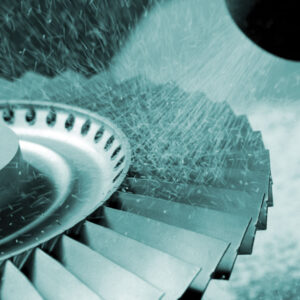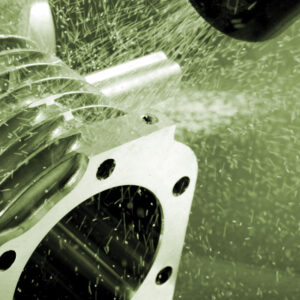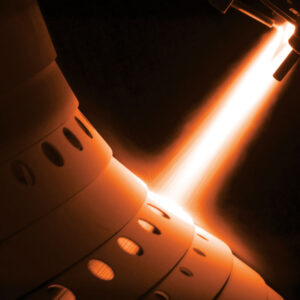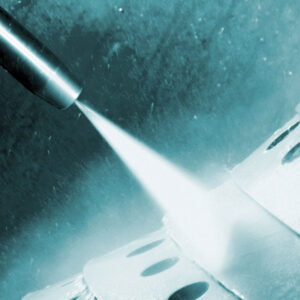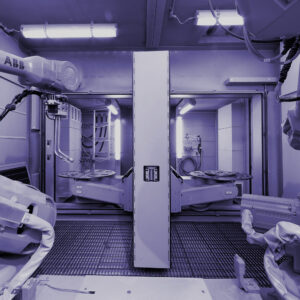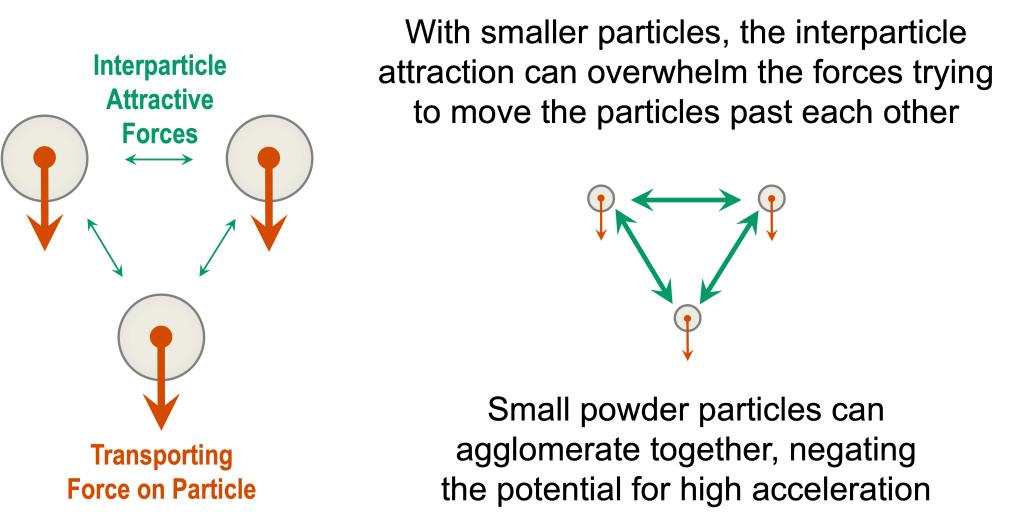During semiconductor manufacturing, wafers undergo a plasma etching process in a specially designed metal etching chamber. A ceramic coating is typically applied to the chamber walls to protect the metal from the erosive and corrosive effects of the etching process. Thermal spray is a commonly used method for applying this ceramic coating, which extends the chamber’s lifespan and reduces maintenance cost.
The erosion and corrosion resistance of the chamber’s ceramic coating increases with decreasing surface roughness and decreasing coating porosity. Thus, a goal of the semiconductor manufacturer is to identify the thermal spray technique that best produces a smooth, dense ceramic coating.
The Thermal Spray Process
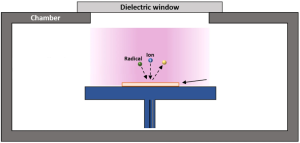
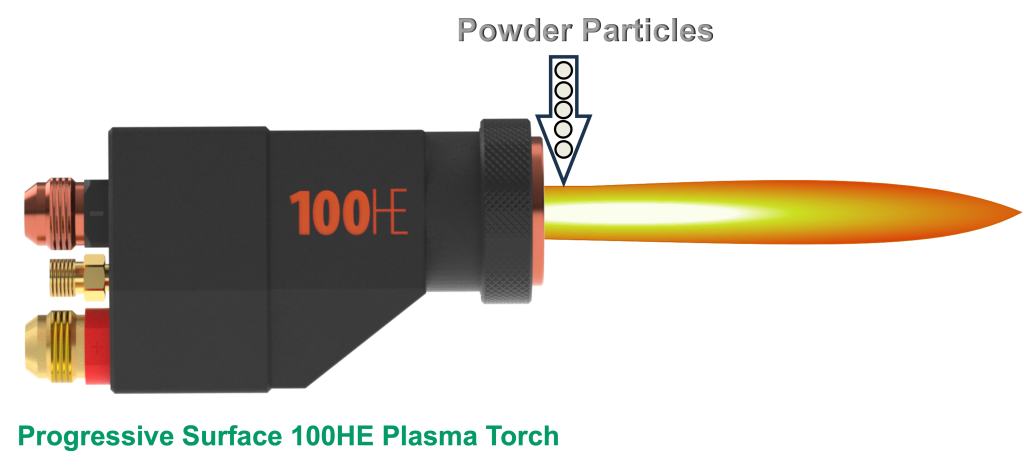
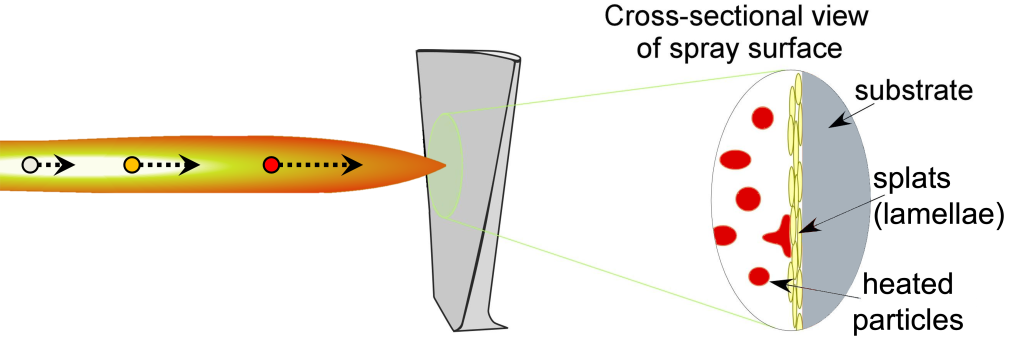
A variety of thermal spray processes exist, and they produce plumes with different temperature and speed ranges as the graph below illustrates.
Comparing Processes
To deposit a ceramic coating, the powder particles need to be nearly fully molten before they impact the substrate.
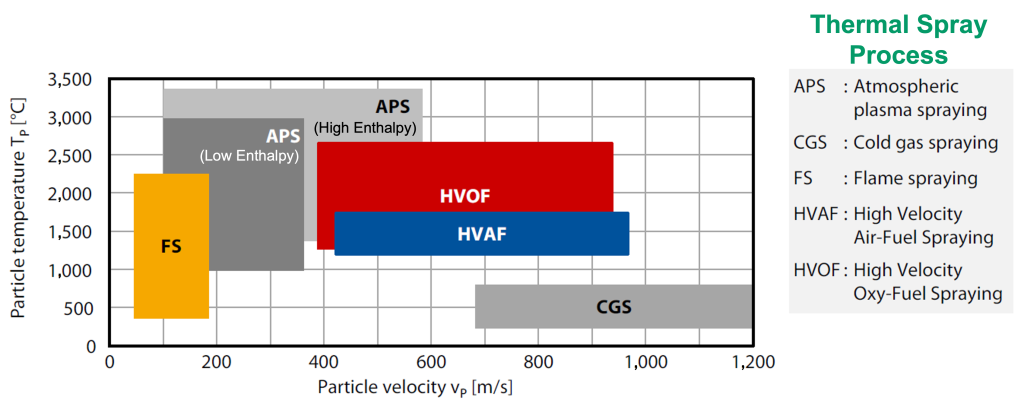
Testing has shown that ceramic yttrium oxide provides good protection in the semiconductor etch chamber.
Yttrium oxide melts at around 2500°C. If we plot that temperature on our graph, it’s clear that a number of thermal spray techniques—including flame spraying, high velocity air fuel (HVAF) spraying, and cold spraying—are not suitable for our objectives, as these techniques produce plume temperatures below 2500°C.
Ensuring the yttrium oxide particles are fully molten will promote the spreading of the droplets during impact, helping to create the desired smooth, dense coating. Additionally, increasing the speed at which the droplets impact the substrate will also promote droplet spreading and help to create a smooth, dense coating.
One means to increase the speed of the depositing droplets is to reduce the size of the initial powder particles, since the drag forces from the plume will accelerate the smaller diameter, lower mass particles more quickly.

However, small diameter powder particles can present a challenge. As the diameter decreases, particle mass decreases faster than the attractive potential between the particles. As a result, the smaller powder particles, which should give the fastest droplet speeds, instead agglomerate together, making it impossible to achieve the high acceleration of individual particles in their natural state.
Fortunately, the small powder particles can be suspended in a solvent which contains chemicals to counteract the interparticle particle attractions.
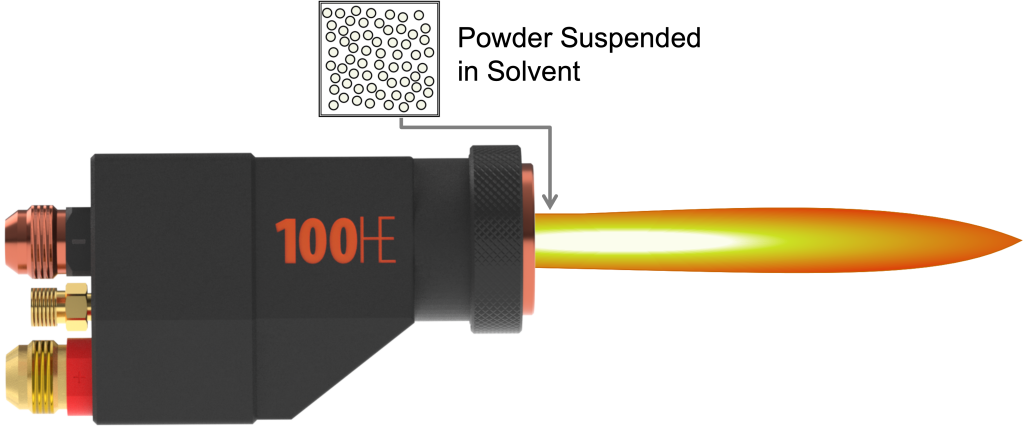
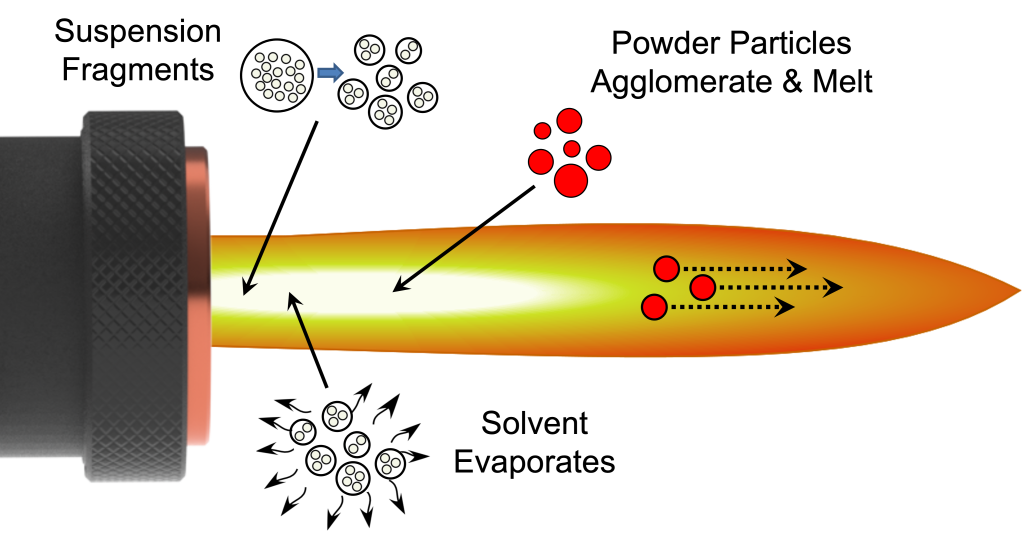
It is then possible to produce a suspension of dispersed small powder particles that can be directly injected into the plume.
After injection into the plume, the suspension becomes fragmented, and the solvent evaporates out of the fragmented droplets. Individual or small clusters of powder particles are left behind, which can be melted and accelerated to the desired high speeds.
Trade Offs
This suspension coating process has been proven to produce smooth, dense coatings for semiconductor etch chambers. It’s worth noting, though, that this process requires more heat than what is required to inject the powder alone, because before the powder can be melted, heat from the plume must also be used to evaporate the solvent.
Therefore, a yttrium oxide suspension is best suited to thermal spray applications that can produce particle temperatures significantly above the melting point. In this way, the plume is more likely to have enough heat to evaporate the solvent and still have enough time and temperature remaining to melt the powder particles. With this reasoning, we can practically eliminate the suitability of the HVOF process because the plume temperatures are not significantly above the melting point of the yttrium oxide powder (see graph #1).
Given that higher velocities are better for making the desired coating structure for the chamber application, high enthalpy plasma spraying becomes the clear best choice among the potential plasma processes. This process of atmospheric plasma spraying, performed with a suspension, is commonly termed suspension plasma spraying, or SPS.
The Proven Leader in Suspension Plasma Spraying Systems
Progressive Surface specializes in manufacturing equipment for the SPS process. Progressive’s 100HE® high enthalpy plasma torch can operate continually at power levels up to 105 kW and produce supersonic plasma plume speeds.
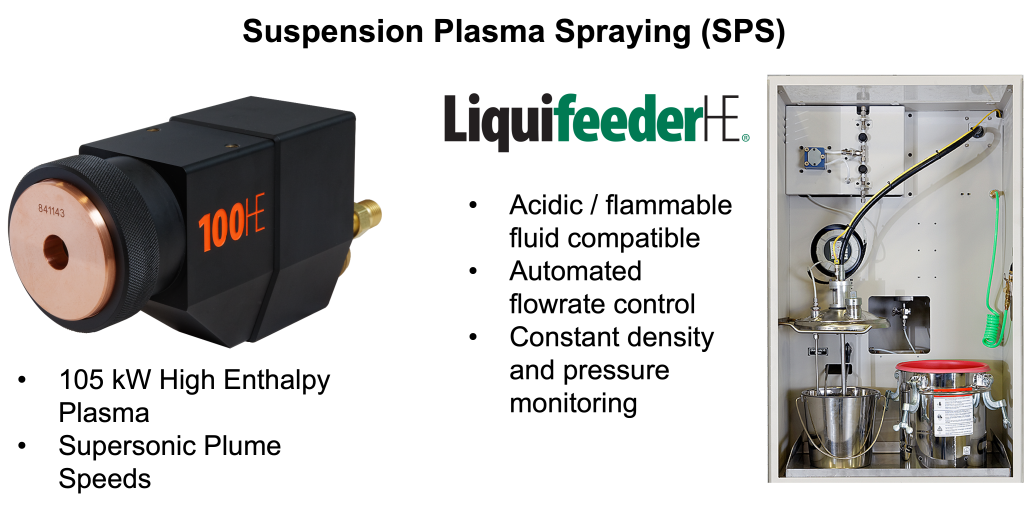
Progressive’s Liquifeeder HE® is designed to maintain and transport fluids, including acidic and flammable liquids, to a torch. During the SPS process, the LiquifeederHE provides automated flow control while also constantly monitoring the density and pressure of the fluid.
Progressive Surface has been a leader in the design and manufacturer of thermal spray equipment for more than 40 years. Contact us today to learn more.
Frequently Asked Questions (FAQs)
Q: What plasma spray process is best for coating a semiconductor etch chamber?
A: Given that higher velocities are better for making the desired smoother, less porous coating structure for metal etch chamber walls, high enthalpy plasma spraying becomes the clear best choice. Progressive Surface suspension plasma spray (SPS) systems, utilizing the LiquifeederHE suspension feed unit and the 100HE plasma torch, spray smooth, dense yttrium oxide (Y2O3) coatings ideally suited for the application.
Q: How can small particle agglomeration be overcome to achieve the fastest droplet speeds?
A: Small powder particles can be suspended in a solvent that counteracts the interparticle attractions. From there, a suspension of separated small powder particles can be directly injected into the plume. After injection into the plume, the solvent evaporates out of the fragmented droplets, leaving behind individual or small clusters of powder particles that can be melted and accelerated to the desired high speeds.

